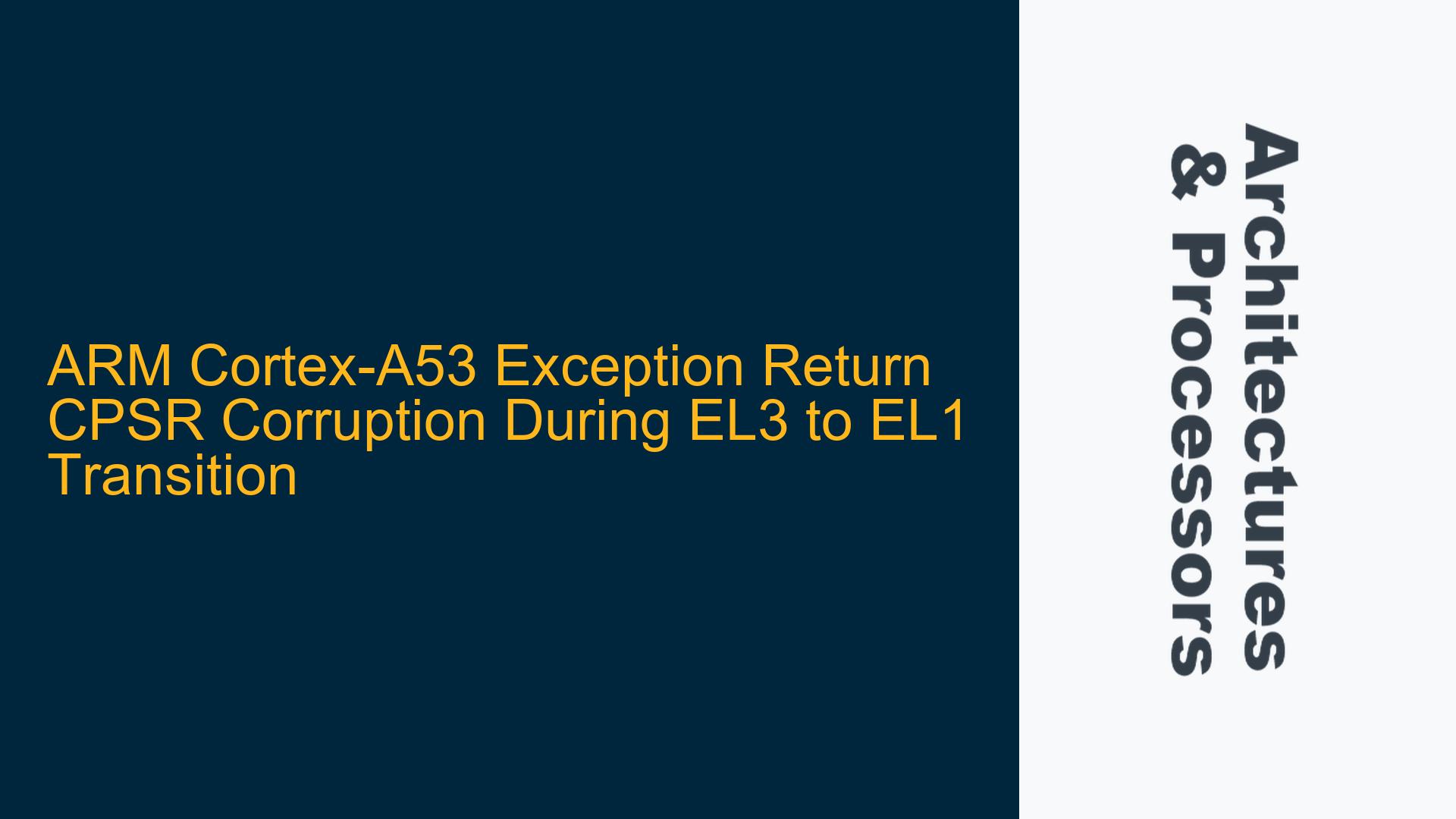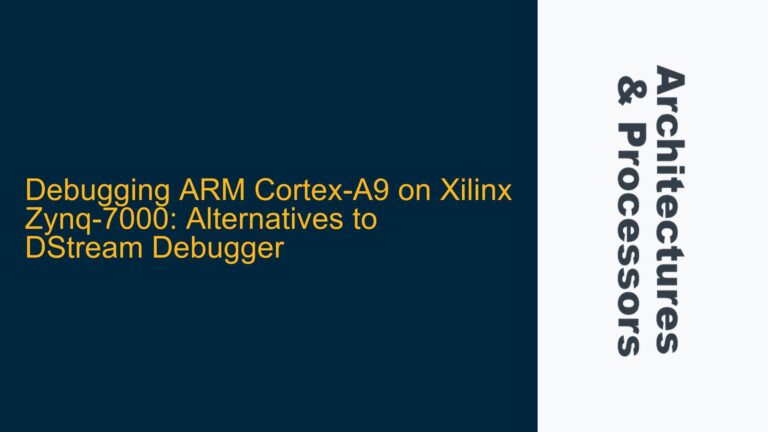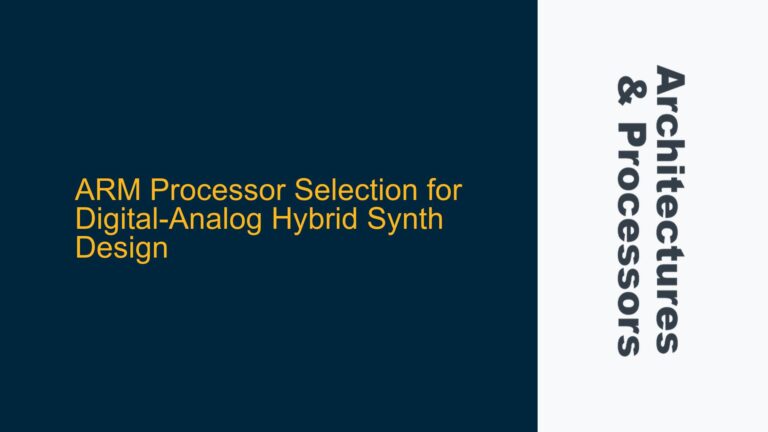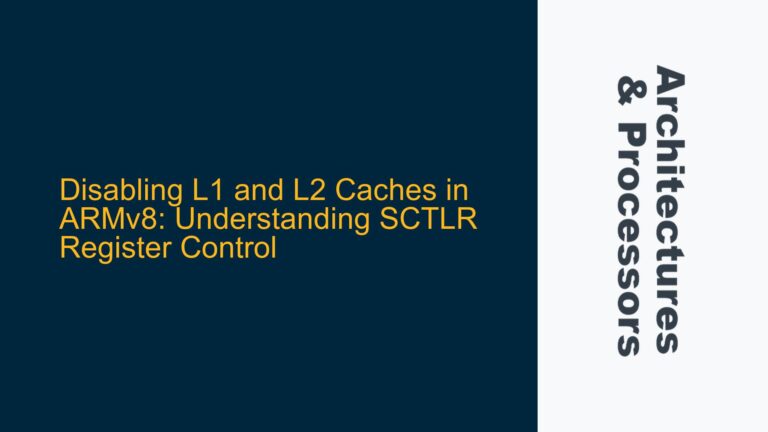ARM Cortex-A53 CPSR Corruption After Exception Return from EL3 to EL1
The ARM Cortex-A53 processor, part of the ARMv8-A architecture, is designed to handle exceptions and interrupts across multiple exception levels (ELs). A critical issue arises when returning from an exception in EL3 (Secure Monitor) to EL1 (OS Kernel), where the CPSR (Current Program Status Register) becomes corrupted. The CPSR, which holds critical state information such as the processor mode, interrupt flags, and condition codes, is essential for the correct execution of the program. Corruption of this register can lead to unpredictable behavior, including incorrect privilege level transitions, improper interrupt handling, and system crashes.
In the observed scenario, the CPSR value before the exception return is 0x600003cd, indicating the processor is in EL3 with specific flags set (e.g., SP, F, I, A, D, C, Z). After the exception return to EL1, the CPSR value changes to 0xaaaaaaaa, which is nonsensical and indicates a severe corruption of the register. This corruption suggests a failure in the exception return mechanism, potentially due to incorrect stack handling, improper register restoration, or a misconfiguration in the exception handling logic.
The CPSR corruption during the EL3 to EL1 transition is particularly problematic because it affects the processor’s ability to maintain state consistency across privilege levels. This issue can manifest in systems where secure and non-secure worlds interact frequently, such as in TrustZone-enabled environments. The corruption not only disrupts the current execution flow but can also lead to cascading failures in the system, making it a critical issue to diagnose and resolve.
Stack Misalignment and Incorrect SPSR Restoration During Exception Return
One of the primary causes of CPSR corruption during exception return is stack misalignment. The ARMv8-A architecture requires the stack pointer (SP) to be aligned to a 16-byte boundary at all times. If the stack is misaligned during the exception return process, the processor may attempt to restore the CPSR from an incorrect memory location, leading to corruption. In the observed scenario, the SP value before the exception return is 0x910100, which is properly aligned. However, after the exception return, the SP value changes to 0xffd149a18804090b, which is not aligned to a 16-byte boundary. This misalignment could be the root cause of the CPSR corruption.
Another potential cause is the incorrect restoration of the SPSR (Saved Program Status Register). The SPSR holds the CPSR value at the time the exception was taken and is used to restore the CPSR upon exception return. If the SPSR is not correctly saved or restored, the CPSR will be corrupted. In the observed scenario, the SPSR value before the exception return is not explicitly shown, but the CPSR corruption suggests that the SPSR may have been incorrectly restored. This could be due to a bug in the exception handler code or a misconfiguration in the exception handling logic.
Additionally, the use of incorrect or incomplete exception handling routines can lead to CPSR corruption. For example, if the exception handler does not properly save and restore all the necessary registers, including the CPSR, the processor state may be corrupted upon exception return. This is particularly critical in systems that frequently transition between different exception levels, as the state must be meticulously preserved and restored to ensure correct operation.
Diagnosing and Resolving CPSR Corruption in ARM Cortex-A53 Exception Handling
To diagnose and resolve the CPSR corruption issue during the EL3 to EL1 transition, a systematic approach is required. The first step is to verify the stack alignment before and after the exception return. The stack pointer (SP) should be aligned to a 16-byte boundary at all times. If the stack is misaligned, the exception handler code should be reviewed to ensure that the stack is properly aligned before the exception return. This may involve adjusting the stack pointer manually or using compiler directives to enforce stack alignment.
The next step is to verify the correct saving and restoration of the SPSR. The SPSR should be saved to a known location in memory before the exception is taken and restored from that location upon exception return. The exception handler code should be reviewed to ensure that the SPSR is correctly saved and restored. This may involve adding additional debug statements or using hardware breakpoints to verify the SPSR value at critical points in the exception handling process.
Another important step is to review the exception handler code for any potential bugs or misconfigurations. The exception handler should save and restore all the necessary registers, including the CPSR, to ensure that the processor state is correctly preserved and restored. This may involve adding additional debug statements or using hardware breakpoints to verify the register values at critical points in the exception handling process.
In addition to these steps, it is important to review the system configuration to ensure that the exception handling logic is correctly configured. This includes verifying the exception vector table, the exception handler code, and any related configuration registers. Any misconfigurations should be corrected to ensure that the exception handling logic operates correctly.
Finally, it is important to test the system thoroughly to ensure that the CPSR corruption issue has been resolved. This may involve running a series of tests to verify that the exception handling logic operates correctly under various conditions. Any remaining issues should be diagnosed and resolved to ensure that the system operates reliably.
By following these steps, the CPSR corruption issue during the EL3 to EL1 transition can be diagnosed and resolved, ensuring that the system operates reliably and correctly. This approach not only addresses the immediate issue but also helps to prevent similar issues from occurring in the future, ensuring the long-term stability and reliability of the system.






